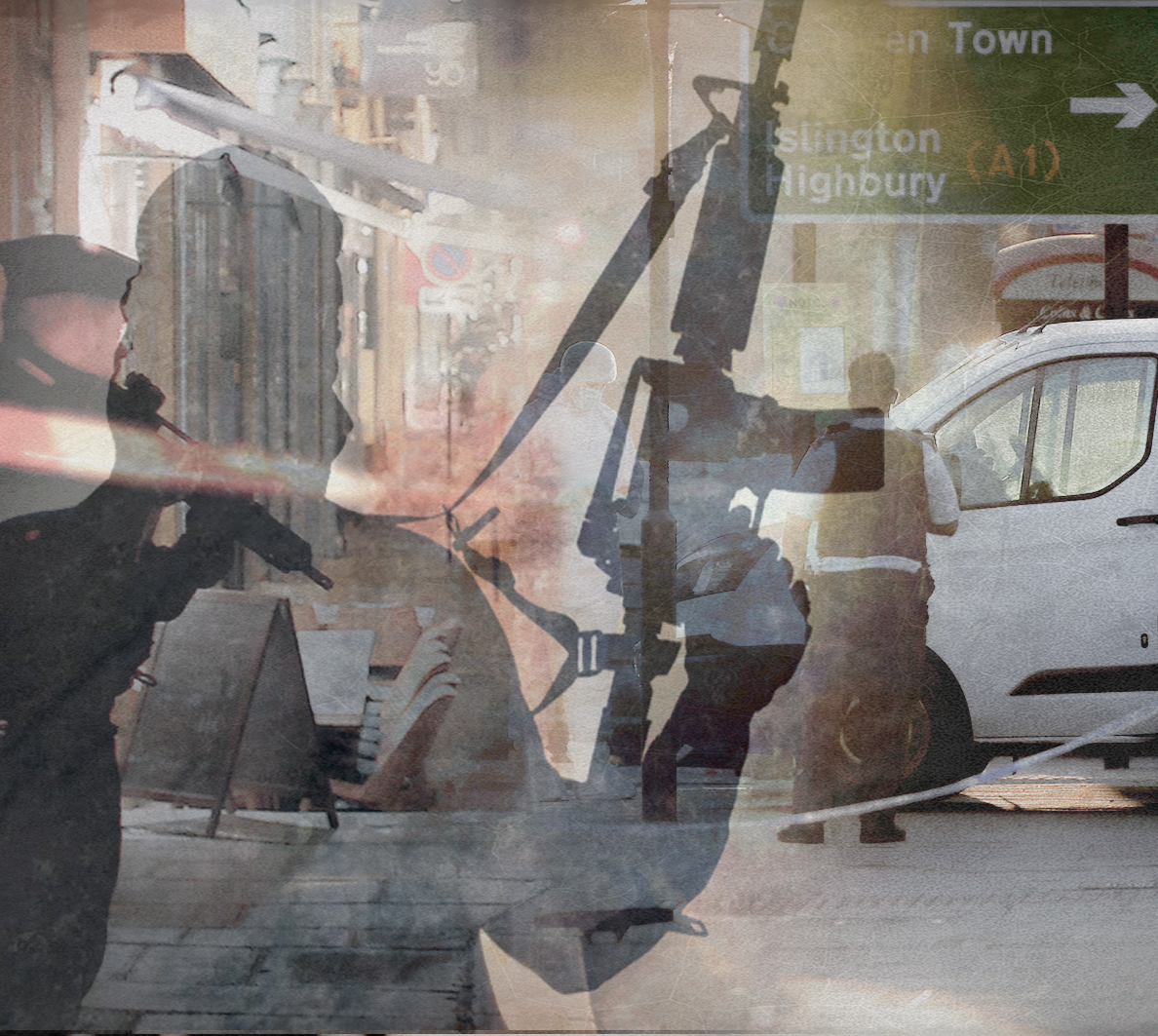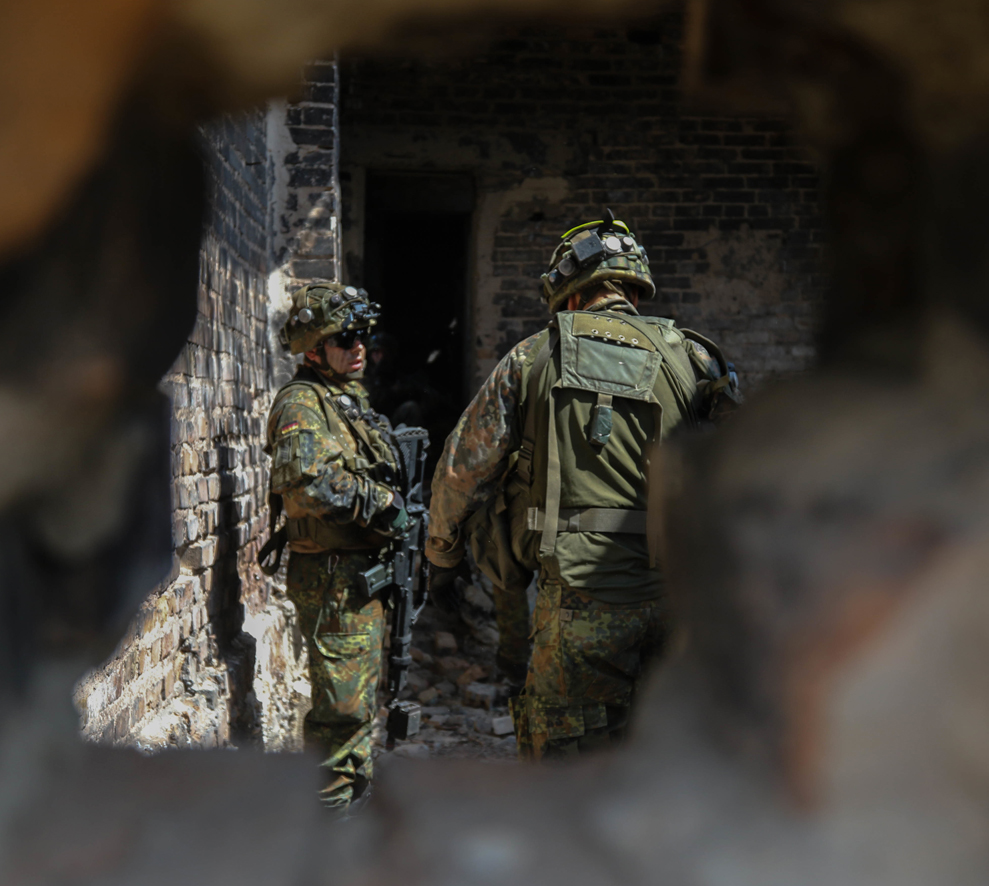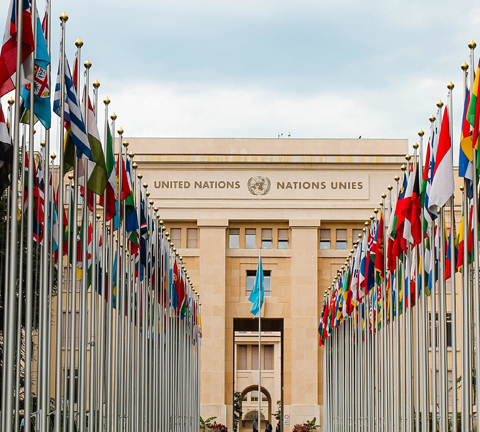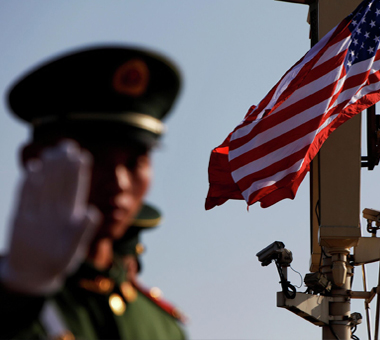On October 1st, 2017, the world witnessed the largest mass shooting in modern U.S. history carried out by 64-year-old Stephen Paddock in Las Vegas, killing around 60 people and injuring more than 500 others. Paddock committed suicide and was later found in a hotel room with a balcony from which he carried out the attack.
An “arsenal” of weapons, ammunition, and explosives were also found in the room. Before any official investigation had been concluded (and perhaps even before it had begun), the most widely circulated daily newspaper in the U.S., USA Today, reported that the incident was a “lone wolf attack”, a description that was also used by international news platforms including British newspapers such as The Guardian and the Telegraph, and even by ISIS. Hence, the widespread of this term urges researchers to devote careful and precise analysis of its usage.
The personnel in the security field and the law enforcement institutions across the world are aware that “the lone wolf attacks” or individual attacks constitute a dilemma that can undermine confidence in the security systems. A matter that all governments seek to avoid due to its dire consequences on the state, its institutions, and its reputation at the domestic and foreign levels. Such attacks may further complicate realizing the security equation and law enforcement based on the debate over balancing between law enforcement and public freedoms.
Such development should prompt researchers and security personnel to establish a new culture that is based on skeptical questions and redefine the concept of security theory concerning the safety of the public, which particularly addresses the concept of counter-terrorism.
This concept has forced governments to restructure the intelligence and security efforts, which have not been able yet to surpass the (Real) Lone Wolf Terrorism, to which some studies refer using "LWT".
The researchers of this paper attempt to define the concept of this type of terrorism as well as explain and refute the flaws and fallacies of its analysis, which would ultimately result in addressing this phenomenon more effectively.
The article seeks to answer a set of questions related to this type of terrorism, which are: Is there any sort of exaggeration in promoting the attacks known as the "lone wolf terrorism"? What are the consequences of such exaggeration? Not to forget an important question, which is: Is it possible to claim that there are real lone wolf attacks? The article, therefore, will define the real single wolf attack and then determine the conditions that entail labeling an incident as such.
A Huge Gap in Definitions
There is a huge existing gap in the definitions that address this type of terrorism due to the absence of consensus on a unified definition among academic, research, or security institutions. This would create confusion and misunderstanding in the analysis and explanation within the security apparatuses that receive knowledge (such as strategies, plans, and scenarios) on one hand, and the academic research centers and think tanks that produce this knowledge on the other hand. This article, therefore, seeks to minimize and fill this gap and enhance the performance of security apparatuses that receive and employ this knowledge. These apparatuses would then formulate practical plans and develop tools to deal with these attacks considering the fact that security institutions are at the forefront when these incidents take place. It would also pave the way for those who produce this knowledge and enable them to initiate a debate that takes into account the sensitivity of disseminating information related to this type of terrorism to media institutions, which may eventually find its way to the society that circulates it in many ways.
When an individual carries out a terrorist attack, analyses rush to describe it as a “lone wolf attack”, unaware of the real danger that a “lone wolf attack” would have on society, especially that such danger can tremendously threaten people's lives. It is thus necessary to be cautious and aware before using this term inaccurately, which could be confusing and a sort of exaggeration. In simple terms, a restaurant chef can become a lone wolf by adding a large amount of cyanide in the food to target his restaurant visitors, just like an airplane pilot can become a lone wolf by targeting a crowded airport or city with his airplane that is carrying innocent passengers.
Therefore, re-reading this phenomenon and clarifying its associated concepts has become extremely imperative. Asserting that a single incident meets the conditions of a lone wolf attack entails a high probability that everyone in the society might become a lone wolf attacker, which is a proposition that is not consistent with the observations and case studies throughout the past years.
The lack of a clear analytical framework for this type of terrorism would eventually lead to a blurry conceptual understanding that impairs looking at the full picture, which everyone shall have the right to access. However, some are discreet about this right, especially in security issues, to ensure the flow of investigations without interference, which is a necessary and guaranteed right under the law. It is noteworthy that “lone wolf attacks” were included in the 2015 Global Terrorism Index as a form of the terrorist attacks against Western countries. The term was listed in the index less than two years ago even though the concept itself has been excessively employed over the past several years.
Lone Wolf: Definition and Conditions
Historically, individual attacks that seek to terrorize, grab attention, or cause harm to properties or individuals for various reasons, are not new. They date back to the 1860s when proponents of the political movement "anarchism" (or what is known as "Leaderlessness") have proposed a theory that was known back then as "Leaderless Resistance". Theoretically, lone wolf terrorism is defined as "an act classified by the authorities as a terrorist act carried out by an individual who is not affiliated to a terrorist group neither directly nor indirectly."
In some cases, this concept has been linked to individuals who committed criminal acts such as murders without being affiliated to organized group, similarly to the attack cases that are associated with far-right or anti-abortion groups in the U.S. It is noteworthy that the concept of lone-wolf terrorism has emerged in parallel with the development of the terrorism concept and its four waves that were introduced by David C. Rapoport in the late 1970s, which include anarchism, anti-colonialism, the new left, and religious terrorism.
Accordingly, a set of conditions has been put forward in order to label a terrorist incident as a lone wolf attack. The conditions are based on specific criteria to put this phenomenon within a specific framework and minimize its looseness, which resulted from the "uneducated" media and the chaos in social media platforms; where information is often circulated without scrutiny or evaluation, in addition to the lack of expertise in some security institutions.
The Conditions based on which a terrorist incident is labeled a "lone wolf attack":
1. The attacker should have a clean security record or have not been subject to any kind of security prosecution before.
2. The attacker’s ideological or political convictions that prompted him to carry out the terrorist attack should not have been influenced by direct or indirect contact with any terrorist group or organization.
3. The attacker should be alone and received no assistance whatsoever. An attack by two or more people cannot be classified as “lone wolf terrorism” as most analysts did in the Paris-based newspaper Charlie Hebdo attack on January 7, 2015.
A terrorist attack can be labeled as a "lone wolf terrorism" only if it meets these three conditions, which ensure that the attacker's set of beliefs were based on a mere individual perception that they are doing the right thing, and their support for an idea or an organization is a result of this absolute individual faith. The conditions also entail that the attacker's action was closely related to their individual desire and ability to execute it alone, fully knowing that their individual action would never be criminalized according to their belief or ideology.
When the security and concerned authorities receive a case that meets these three conditions, it is generally agreed that such operations are very difficult to be prosecuted, investigated, or even predicted by the security and intelligence institutions in advance. Indeed, this constitutes a real challenge for security and intelligence institutions. The society may, therefore, sympathize with these institutions due to the incapacity to prevent such an attack. It is thus necessary to review the incidents that took place and met the lone wolf terrorism conditions, and then determine its ratio to the total number of terrorist attacks carried out around the world.
The researchers believe of an existing parallel threat to the real lone wolf terrorism, manifested by the attacks that are organized by a "Wolf Pack", who devotedly operate within micro-cells to design and develop an attack through providing material and logistic support to the attacker. The difficulty in tracking “pack” attacks lies in the resourcefulness of its members in hiding the bonds between them, especially if they are family members, of the same origin, or even neighbors. Such type of organizations manifests itself in a hybrid manner. That is, the attacker can be an apparent lone wolf, but he acts within a wider and collective system.
It is worth noting that in all the incidents that were classified as lone-wolf attacks, the attacker can be affiliated to a wider social network that suffers from grievances, which extremist groups exploited for the sake of recruitment and mobilization. This article argues that most of the observed analyses over the years have intentionally or unintentionally highlighted the attacker’s "individuality" and his non-affiliation to any kind of organization. This resulted in a kind of exaggeration in promoting the lone wolf phenomenon and all its subsequent risks, which will be addressed hereafter.
The good news, however, that this kind of organization can be infiltrated and tracked down to thwart schemes of such packs that are living alone, but thinking collectively. This transition is not achieved by following the traditional way; when analyzing some issues, it is found that thinking in such a manner (the wolf pack and analyzing interpersonal relationships and resources) would lead to putting the puzzle pieces together and drawing a clearer and more coherent image.
Objectively speaking, the intelligence and security efforts should restructure their mechanisms and strategies in tracking down any potential terrorist attack following the radical change of how terrorist organizations and groups are formed. Such change is based on reinforcing a set of concepts in the society's collective mind and thereafter in the individual mind. The most widespread concept, which is both old and new, is based on the duality of "grievances and rights." This concept is closely related to the rights of the society, a sort of hatred against a particular group, or attacking a group that is accused of persecuting other groups based on ethnic, religious, or sectarian grounds, among others.
Hence, anyone may resort to express protest by executing a deadly attack that may not be classified as "terrorist" in some countries, nonetheless, it constitutes terrorism to the people and society. By observing several cases, the traits of a lone wolf, which are listed in this article, were found applicable to some horrific incidents that took place in the U.S and Europe but do not apply to incidents that took place in the Arab world or Asia. In order to clarify this approach, two incidents will be examined to question the concept of lone-wolf attacks, noting that both incidents are different in terms of motivation, the characteristics of the attackers, and their upbringing conditions. However, a profound analysis of the two would lead to realizing the real extent of the horror that societies will experience if real lone wolf attacks became prevalent.
Norway Attacks (2011)
On July 22, 2011, Norway witnessed a bloody terrorist attack by a single person called Anders Behring Breivik, a so-called believer in Nazism and Fascism who used to run an anti-Muslim and xenophobic website. The incident resulted in 77 deaths in two separate attacks; what was striking and constituted proof of the attacker's individuality is a tweet he published prior to the incident; "one person with a belief is equal to the force of 100,000 who have only interests", the attacker posted on his Twitter account.
Fort Hood Shooting (2009)
In November 2009, the 39-year-old Palestinian-American officer and psychiatrist Nidal Hasan shot his colleagues at the Fort Hood military base in Texas inside the medical examination center, which was dedicated to the military forces preparing to be deployed overseas. Hasan killed 13 people and injured 31. After he was shot and wounded, the attacker was referred to the military trial. Nidal Hasan then gave a full deposition about the operation he carried out, admitting more than once that he was in his right mind then. According to his justification, it was an act of revenge for the operations of the U.S. military forces against Muslims in Afghanistan.
What is remarkable about Nidal Hasan’s case is that his presence at the base was in preparation for sending him to Iraq by the end of November as he is specialized in providing psychological care to the soldiers returning from Afghanistan and Iraq. After joining the U.S. forces in 1997, he was awarded the National Defense Service Medal and the Global War on Terrorism Service Medal.
Based on the aforementioned, it is evident that the analyses of countering all forms of terrorism are now facing a new challenge. That is, distinguishing between the real lone wolf attacks and the attacks that are portrayed to be one. In a study by the “Southern Poverty Law Center” published in February 2015, the results found that 74% of 60 terrorist attacks planned and executed in the U.S. between 2009 and 2015 were classified as lone-wolf attacks, while 90% of them were carried out by one or two people.
In an interview with the former director of Europol Rob Wainwright, he told the researchers that lone wolves attacks often involve more than one person during the planning stage, which might not be surprising.
Joe Navarro, former FBI agent and co-founder of the Behavioral Analysis Program, believes that the main motive of the 60 incidents mentioned in the report was either the tendency for anarchism i.e. the belief that all governments and social organizations should be abolished voluntarily and cooperatively without resorting to force or coercion or the hatred of a particular social group, which is not entirely the case with terrorist acts committed under religious slogans, especially in Europe.
This finding comes in light of the fact that the main source of the attack idea for the real lone wolf starts from isolationism and promoting the notions of grievances and oppression as a justification for the action.
By studying more than 50 cases of people who described their acts as an individual practice, it was found that despite the different political, moral, social, or religious motives, their personality traits were very similar, some of which might be even identical. The cases included three types of personalities: the first was a group of people who spent their entire lives in the U.S., the second included people living in Europe, while the third was for people from the Arab Maghreb and lived for a while in Arab conflict zones; i.e. Iraq, Syria, or Libya.
The Misleading Propaganda
Through research, investigation, and examination of all terrorist attacks that took place around the world between 2014 and 2016 and the first quarter of 2017, it becomes clear that most of these attacks were carried out by groups of two or three people, or by one person who received logistic support from an organization or an intelligence apparatus.
The available data and pieces of evidence indicate that 95% (as calculated by the researchers) of the people who carried out these attacks during that period were listed in Red Notices for previous investigations in cases of extremism; violence; sympathizing with or attempting to carry out an attack; or they are returnees from conflict zones. In other cases, it was found that certain countries issued notices that warn against the threat they pose. Hence, how can we call these attacks "lone wolf terrorist"? Why this danger is being amplified? And for whose interest is it done?
Media plays an important role in misleading or enlightenment. It is well-known in the literature of media, that a scoop or the first piece of news about an issue is the most important news that is circulated and mostly believed by the audience. The refutation or modification of the original news (if any) would not receive the same importance as the first one. Between 2014 and 2016, Arab and international media outlets were interested in terrorist attacks that were classified as being carried out by a lone wolf. These outlets have immediately begun to search for any religious aspects to link them directly to the incidents.
The investigation, however, revealed that these attacks were for pure criminal motives, while others were related to mental disorders. Yet, the investigation findings did not receive a proper media interest. One can assert that more than two-thirds of the audience who read the news that these were lone-wolf terrorist attacks would still believe this is the true description of the incident.
Media coverage of terrorism issues are rife with opportunities for a scoop, and they are considered hot events for media organizations. It was hence noted that media has already fallen into the trap of generalization as outlets perceive themselves as only messengers. They compete to provide extensive media coverage, create connections between events, broadcast unprofessional reports, and host people to talk about the incident, who often commit serious mistakes in their analyses considering their lack of specialty. Consequently, the layperson would find it difficult to understand and thus become prey for those who try to impose and spread fear as an entire product.
The question here is: For whose interests do news outlets and social media platforms compete to promote the actions of terrorist groups? This echoes what former British Prime Minister Margaret Thatcher (1979-1990) said: "Publicity is the oxygen of terrorism". Over the past years, no researcher, research, or security institution has been able to develop a personal profile of a real lone wolf. As a result, it is difficult to correctly predict the objectives or the perpetrators. The question is then whether it is possible that an ordinary person who goes to a public café can be a lone wolf attacker, or is he part of a “wolf pack ”? That is, are they an angry sympathizer and tend to resort to violence if the opportunity arises or just an ordinary person who is burdened with life just like other people?
Therefore, the packs that move around the world looking for an opportunity to wage an attack are fully aware of this feature and know how to employ it. However, that is not to delude the simple person waiting for their plane in the airport, or the lady who reads a book in a French cafe, but it is rather used as a delusion and cover to deceive security forces. This explains the common statement that authorities repeat when such types of incidents take place, which is: “The attacker is known to the authorities”.
It is often heard in several attacks that the security authorities know the attacker who is also listed in the red notice, or that he has been previously arrested on issues of hatred, sympathy for an extremist organization, or traveling to conflict zones.
In other words, this attacker constitutes a potential source of threat for the security apparatus, yet, he succeeds in carrying out a deadly attack. In contrast, an ordinary person who may have issues with the credit card worth $1000 might be entitled to troubles and prosecution without being listed in the red notice or being observed by the security or intelligence radar.
Moreover, the way this concept is currently employed in such an unprecedented manner overlooks the copycat crime effect, which could have a role in the decisions of these individuals. In other words, individuals who have committed crimes that are classified as lone-wolf terrorism could be affected by similar incidents committed by those accused of mass murder crimes, which refutes the individuality of that wolf act.
After a comprehensive analytical study of more than 200 lone wolf cases in their book “The Age of Lone Wolves Terrorism”, the two experts in terrorism, Mark S. Hamm and Ramón Spaaij, found that a combination of personal and political contextual grievances would lead lone wolves to commit such acts. They might be jihadists, believers in the white race superiority, or other groups that oppose existing governmental institutions. Therefore, the impact of the wider socio-political situation in lone wolf incidents was fully present in the case of extremism and joining armed groups in general.
Fourth Generation Terrorism
The paper's topic cannot be discussed without addressing the form of terrorism that has become one of the military tools adopted by some countries within a wide concept known as "gray-zone wars" and "fourth-generation wars". Some investigations of terrorist cases have referred, directly or indirectly, to foreign intelligence agencies. In some other cases, the investigations indicated the involvement of domestic intelligence agencies; hostile intelligence agencies might be the best in exploiting the lone wolf concept. Such findings would further burden security institutions and increase the pressure on their resources.
In his book "War in an Age of Risk" (2009), Professor Christopher Coker explains that the world's perception of war has changed across time in terms of understanding and war tools. While the war was a conflict among wills, it has become the science and art of risk management; it has become as complex as national and domestic security requirements. Today, the world agrees over the necessity to unite against terrorism, but how will such global warfare exist against several variables that are too difficult to understand?
Indeed, carrying out a terrorist operation for whatever objectives or contextual reasons, is a crazy idea that only serves a desire of the perpetrator. There are references, sources, studies, and papers that highlight the sociology of terrorism and its association with violence, and in the course of this article, we observed the case of the German officer Franco A and his partners (Der Spiegel - May 2017) who pretended to be a Syrian refugee. Because of his military position, he had the means and tools necessary to carry out a terrorist operation that would inevitably be considered "a lone wolf attack by an extremist Syrian refugee." As a result, terrorist organizations would have benefitted from this deliberate lie and adopt it as a fact for granted, prompting a social media user to describe it as a “great victory in a Western country.”
In Germany, Der Spiegel reported in September 2017 that based on security information, around 60 fighters from the extremist "Al-Nusra Front" in Syria are currently living in Germany, and they are members of the "Owais al-Qorani Brigade" who came to Germany as refugees.
The question that is raised here is, where does such information lead? And will German authorities be surprised by any action targeting their territory?
In this context, a recent study by the Institute for the Study of War (ISW) in September 2017 revealed that the terrorist organization ISIS would focus its operations in Europe in the coming period, especially after it suffered a great loss in its territories in Syria and Iraq, adding that the organization will use what remains of its safe havens to plan for attacks inside Europe. Here, it must be said that ISIS is attempting to portray all the attacks on Europe as lone-wolf attacks, seeking to spread a greater wave of terror and fear across the world. However, it would be illogical to agree with that.
In its comments on Parsons Green train bombing in London in September 2017, the European Union Agency for Law Enforcement Cooperation, Europol, indicates that there is no evidence of a direct or organized relationship between ISIS and the refugees in Europe and Britain i.e. recruiting them to carry out terrorist attacks. However, they may have been influenced by the organization’s continuing calls for terrorist acts in Europe. It is clear that the Europol is trying to decrease the significance of a link between terrorist organizations and refugees as a kind of positive propaganda that aimed at reducing the sense of danger. It would also give space to the security apparatus to carry out their intelligence efforts, while the organization thinks that the security personnel is unable to discover the relationship between the organization and its members.
Moving Forward
The risk of creating and using loose concepts such as lone-wolf terrorism is attributed to misleading public opinion and leading to a misguided perception of the nature of the dangers the world is facing. Such labels frame the individuals’ perception and their function within this world.
For example, lone-wolf terrorism does not earn much importance among the public. Since the wolf is "alone", it implies that he is an exception to the rule and consequently, it is needless to be concerned about it. Indeed, the real security situation is utterly different from this assumption.
The adoption of this concept to terrorist attacks increases the risks of unpredictability, which leaves the world subject to a predestined defeat by these groups. Equally dangerous, the recognition of the lone wolf terrorism suggests the potential existence of millions of lone wolves, whose movements cannot be stopped or expected by the security personnel and the law enforcement agencies around the world. It is, therefore, imperative to analyze this concept and put it in the right context, which must be based on a theoretical framework that addresses the structural imbalances of this concept.
The cornerstone of this framework is acknowledging the contradiction between the concept of the lone wolf and its “sophistication” in the form in which it is now employed. In its current sense, such an attack is no more than an “imaginary approach”.
The terrorist act is a misdeed that is inspired by an existing comprehensive ideology with a historical extension and geographical expansion in light of the world's developments. It is also influenced by social, economic, political, and religious contextual grievances, which are reinforced by various means of communication, both traditional and non-traditional.
Thus, even the individual whom we immediately describe as a lone wolf is, in fact, an individual who was influenced by objective motives, by which terrorist groups were also affected and have employed. He also adopts terrorist tactics that are used by all members of terrorist organizations such as spreading terror, destruction, shooting, and bombing.
In addition, this framework requires viewing the lone wolf concept as a manifestation of the developing recruitment policies pursued by terrorist groups. The clear decentralization of Al-Qaeda, for example, particularly after Osama bin Laden’s death, must be closely linked to the increase of the so-called lone-wolf attacks. Several affiliations were unveiled, linking many “lone wolves” to Al-Qaeda such as Faisal Shahzad, the suspect of bombing the Times Square in New York and Mohammed Bouyeri, who killed the Dutch film director Theo van Gogh. More recently, the gunman in Louisville and Pittsburgh and Cesar Sayoc, the mail bomber in Florida revealed their association with ISIS.
In the same context, ISIS has explicitly used the term "lone wolf" in a video they released, in addition to publishing a booklet in English titled "Safety and Security Guidelines for lone wolf Mujahedeen and Small Cells." These are among the decisive indicators that the lone wolf strategy is highly important for these terrorist organizations. Thus, it is imperative to address the illusion in the analysis of lone-wolf terrorism. It is also difficult to claim the “individuality” of the so-called lone wolves.
Keep in touch
In-depth analyses delivered weekly.

Related Analyses:












